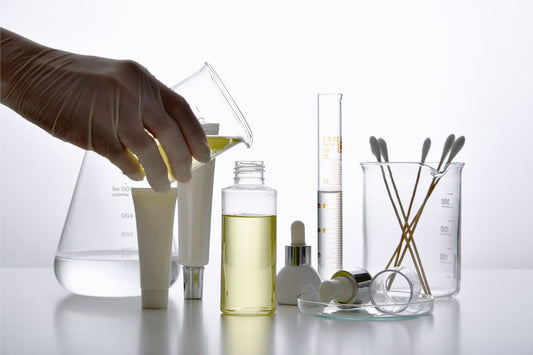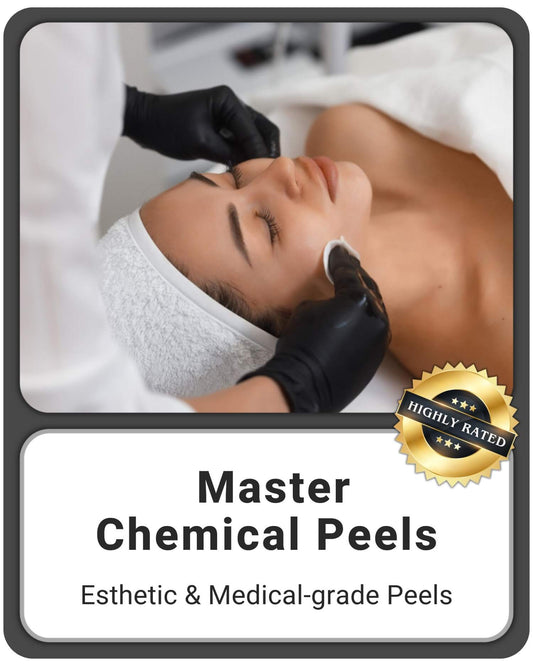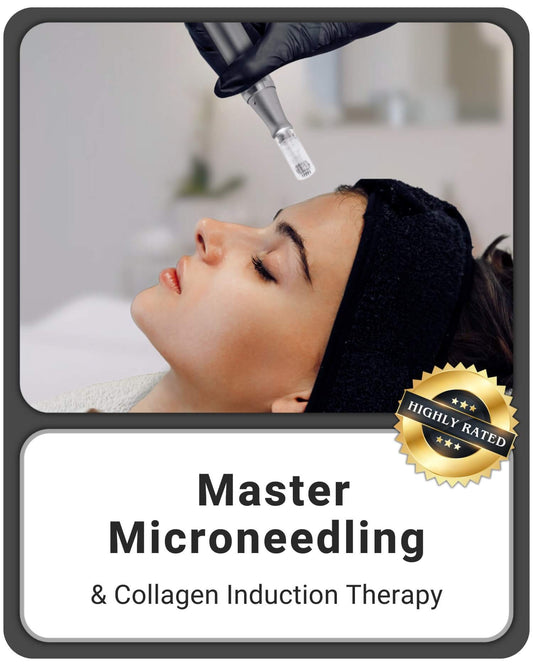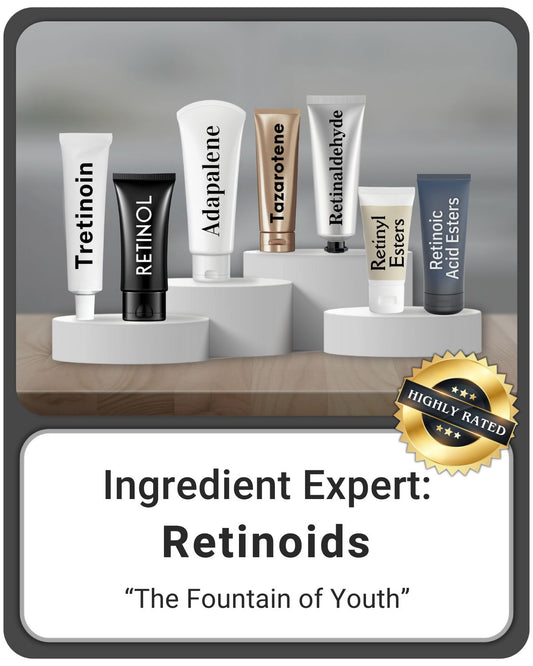
Stem Cells in Skincare: Separating Fact From Fiction
Jen CopferShare
As the skincare industry continues to evolve, people are always searching for the next breakthrough ingredient that actually delivers results. In recent years, stem cells have generated quite a buzz, with numerous brands promoting them in their products.
But are stem cells truly the secret elixir for skincare and anti-aging, or is it all just marketing hype? Let's look into the world of stem cells in skincare and debunk some common myths to give you the truth behind this unique ingredient.
*Resources listed at the end of the article*
Key takeaways:
- Stem cells are unique in their ability to self-replicate and transform into other cells and tissues.
- Stem cells play a vital role in tissue healing and regeneration, making them ideal to use for a variety of skin-related therapies.
- Skincare stem cells are ethically sourced, primarily from consenting adults, and not human embryos.
- Topical stem cell products contain beneficial growth factors and cytokines, not live cells, eliminating risks like DNA transmission.
- Non-human stem cells in skincare, like plant or animal, can't stimulate human skin cells in the same way as human stem cells.
What are stem cells?

What is so special about stem cells? Even though stem cells start out as simple cells that aren't specialized for any particular tissue in the body, they have two unique characteristics that make them stand out from other cells.
-
Replication.
The first distinctive characteristic is that they can replicate themselves, which means they can create identical copies of themselves.
-
Regeneration.
The second distinguishing feature of stem cells is their remarkable capacity for regeneration. They can rebuild different tissues in our body by transforming into virtually any other tissue-specific cells. Stem cells begin as unspecialized blank cells but can turn into, or differentiate into, specialized cells that our body might need.

From skin, muscle, or even brain cells, stem cells are the only cells in our bodies that can turn into nearly any other cell. In fact, every cell in our body first originated from stem cells.

Stem cells: the body’s repair system
Due to their unique characteristics, stem cells play a vital role in tissue healing and regeneration.
Their primary function is to serve as the body's repair and maintenance system. They achieve this by transforming into new specialized cells that replace damaged cells and tissues.
For example, when we have a cut or a wound, stem cells can turn into all types of cells needed to repair and heal the wound such as collagen, elastin, and keratinocytes (skin cells).
As part of the body's repair mechanism, stem cells have the capability to:
- Heal and repair wounds
- Regenerate tissue
- Help dying cells survive
- Fight inflammation
Stem cells used in skincare

The healing and regenerative properties of stem cells make them a hot topic in dermatology research. Although research is still in its early stages, stem cells are being investigated for their potential use in a variety of skin-related therapies.
Stem cells for cosmetic benefits
Stem cells are a promising tool in cosmetic enhancements. Some studies have shown that stem cells can increase the production of collagen and elastin, which can help reduce wrinkles and sagging skin.
Other studies show that stem cells can accelerate wound healing, which is especially beneficial after aesthetic treatments such as microneedling and laser resurfacing.
Researchers are also studying the possible roles of stem cells for the following:
- Reducing scar formation
- Minimizing skin discoloration
- Treating acne
- Improving skin texture
- Rejuvenating the skin
- Anti-aging effects
While more research is needed, the results so far are promising.
Stem cells for treating skin diseases and conditions
Beyond cosmetic benefits, stem cells also hold the potential to treat and possibly cure various skin diseases and conditions.
Several studies have demonstrated that topical stem cell products may help improve inflammatory skin diseases such as psoriasis and atopic dermatitis. The wound-healing properties of stem cells have also shown promise in speeding up the healing time of wounds such as diabetic ulcers.
How do stem cells achieve these amazing regeneration benefits? One way is by sending messages to other cells to tell them what to do. Stem cells use messenger molecules, known as growth factors and cytokines, which give specific instructions to other cells on how to aid in skin repair and regeneration.
The language of cells: growth factors and cytokines
Did you know that almost all the cells in our body communicate with one another? The language they use is chemical messenger molecules known as growth factors and cytokines.
Each messenger molecule carries a specific coded message that fits perfectly into a matching receptor on the receiving cell, just like a key fits into a lock. The receiving cell is then able to un-code and read the message.

Growth factors and cytokines are able to regulate various cellular activities, such as:
- Stimulating new cell growth
- Cellular differentiation
- Wound healing
- Regulating inflammation
- Collagen and elastin production
This cell-to-cell communication plays a vital role in wound healing and skin remodeling. Stem cells send growth factors and cytokines to instruct other cells on what to do to facilitate repair and regeneration.
Are human stem cells in skincare ethically sourced?
The good news is that the stem cells used in skin care products are ethically sourced since the process doesn't involve embryos. The cells are instead collected from consenting adult donors or ethically obtained tissue samples.
These stem cells are called mesenchymal stem cells (MSCs) and are typically sourced from:
| Stem cell sources | Method of collection |
|---|---|
| Bone marrow | Usually taken from the pelvic bone |
| Adipose (fat) tissue | Sourced during liposuction |
| Fibroblasts (collagen & elastin-producing cells) | Derived from different sources, including skin from surgery, and even foreskin left over from baby circumcisions |
| Umbilical cord blood | Donated after birth |
However, not all mesenchymal stem cells provide the same benefits. The type of growth factors and cytokines the stem cells secrete can vary depending on their source, and some may be more beneficial for certain medical goals than others.
What about the risks of using someone else's stem cells?
One question that often arises when discussing stem cell therapies is the risk associated with using someone else's stem cells, especially if the donor and recipient are not immediately related.
While this is a legitimate concern, researchers have found a way to prevent this risk altogether they don't use actual stem cells in the product.
So, how exactly do these products obtain stem cell benefits without having stem cells? The answer lies in the growth factors and cytokines that the live stem cells secrete, known as conditioned media.
Conditioned media: the secret to stem cell benefits
If you remember, it's actually the growth factors and cytokines secreted by the stem cells that contain the special instructions that tell other cells what to do.
Researchers have discovered that they can grow stem cells in a lab, which secrete the same crucial healing and regenerative growth factors and cytokines as they do inside the body.
The stem cells are then completely filtered out and discarded, leaving no living cells or DNA behind. The 'cell-free' nutrient-rich broth that remains, containing all the beneficial messenger molecules, is called conditioned media.

You can think of conditioned media as a message in a bottle carrying the key signals and instructions from stem cells.
As a result, conditioned media eliminates any risk of DNA transmission from the donor, rejection by the recipient, or cross-infection, making it a safe option for skincare products.
Human stem cell-derived conditioned media is used to replace live human stem cells in skincare products.
What about plant and animal stem cells?
Numerous skincare products advertise their products for having plant or animal stem cells, such as apple, lilac, or snail. But do non-human stem cells have the same benefits as human stem cells?
Unfortunately, non-human stem cells don't work the same way as human stem cells.
Most of these claims are just marketing ploys the companies use the term 'stem cells' to grab your attention and give the impression that they provide actual stem cell benefits.
Plant, snail, or other non-human stem cells don't speak the same biological language as human stem cells. Our human cells can't read their message because they don't have the right key to unlock the receptors on our cells.


However, this doesn't mean that non-human stem cell products have no benefits for the skin. They may provide antioxidant properties or help with hydration. But they don't provide the specific benefits that human stem cells provide.
Common stem cell myths debunked
Now that we've covered the basics of stem cells in skincare let's debunk some common misconceptions.
Myth: Stem cells in skincare products are derived from human embryos
False. It's important to clarify that skincare products use stem cells sourced responsibly from consenting adult donors (such as bone marrow or adipose tissue) or ethically obtained tissue samples, not from human embryos.
Myth: Skincare products with stem cells contain live stem cells
False. Stem cell skincare products don't contain actual stem cells. Instead, they contain all the beneficial growth factors and cytokines the stem cells secrete, known as conditioned media. These beneficial molecules instruct other cells on what to do in order to facilitate repair and regeneration, providing the same benefits as stem cells.
Myth: There is a risk of using someone else's stem cells in skincare products
False. Stem cells used in topical skincare products are 'cell-free,' meaning they do not contain actual stem cells but rather only the byproducts secreted by these cells. Therefore, there is no donor DNA in these products, which eliminates any risk of DNA transmission from the donor, rejection by the recipient, or cross-infection, making it a safe option to use for skincare products.
Myth: Plant stem cells provide the same benefits that human stem cells do
False. Plant and human cells are biologically different and speak completely different languages. While plant and non-human stem cells may offer other benefits to the skin, such as antioxidant benefits, they can't interact with our skin cells in the same way human stem cells can.
Myth: All human stem cell skincare products are equally beneficial
False. The quality and benefits of stem cells in skincare products vary greatly. Many factors affect this, including:
- Where the stem cells are sourced from
- How they're extracted and formulated
- Their concentration
- How they're manufactured and stored
So, buying your products from reliable companies that can support their claims with solid, independent, peer-reviewed research is essential.
As the stem cell skincare market continues to expand, gaining a solid understanding of the facts will help you to make informed decisions about incorporating these products into your skincare routine. Although the field still requires further research and such studies are indeed underway new discoveries about the potential uses of stem cells are continually being made.
By staying informed about the latest research, you can be confident in the choices you make about the products you use, ensuring they are both safe and effective in addressing your skincare concerns.
Resources
- Experimental Dermatology. Secretomes as an emerging class of bioactive ingredients for enhanced cosmeceutical applications.
- Journal of Controlled Release. The therapeutic and commercial landscape of stem cell vesicles in regenerative dermatology.
- World Journal of Biological Chemistry. Stem cells and the pursuit of youth, a tale of limitless possibilities and commercial fraud.
- Clinical, Cosmetic and Investigational Dermatology. Mesenchymal stem cell secretome for dermatology application: a review.








